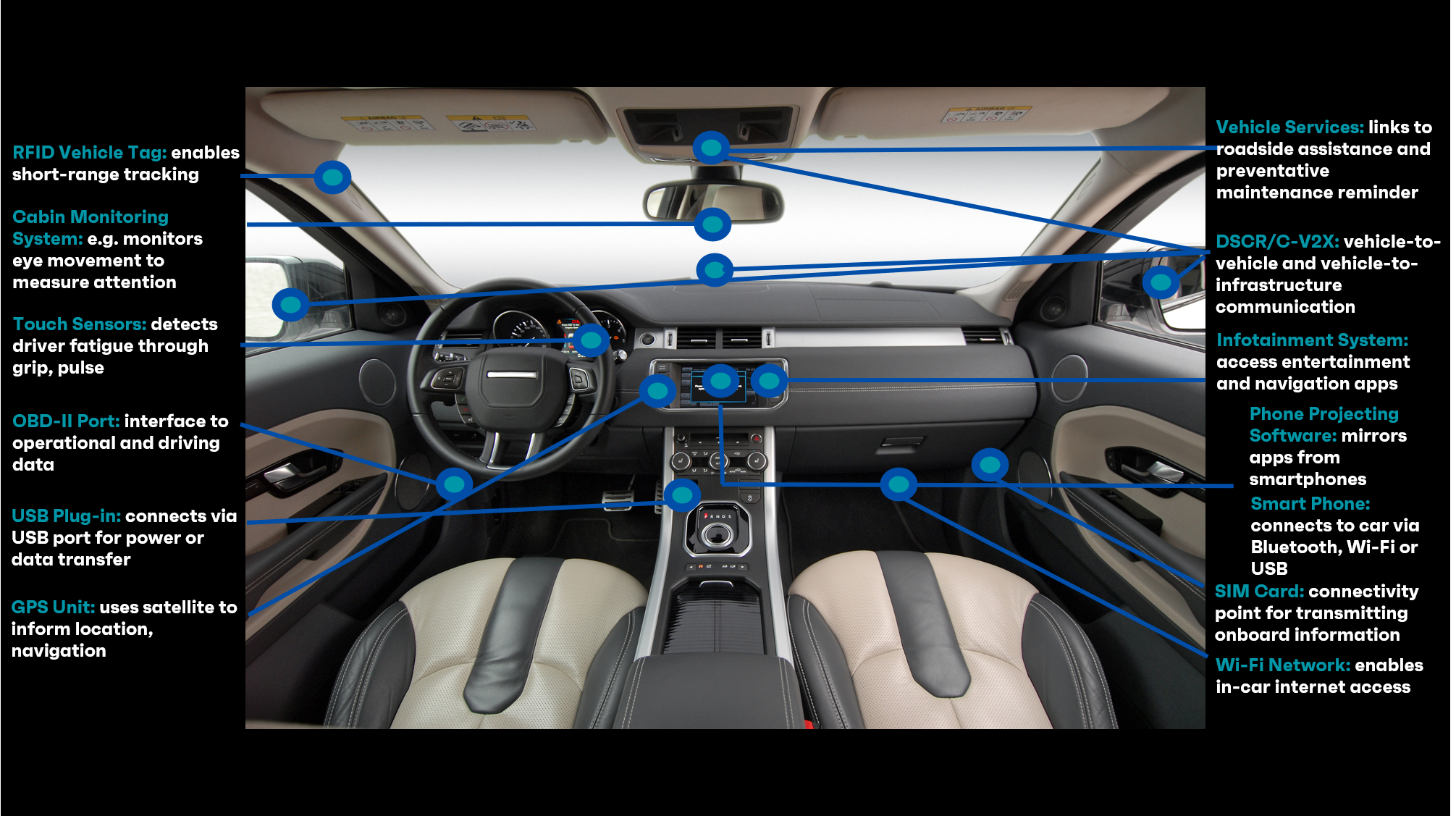Today, consumers stay connected through navigation systems, real time traffic information, the ability to interact with your vehicle from a mobile device and hands-free phone calling.
CONNECTED VEHICLES
What Is The Connected Car?
A variety of driver assists are available that can help monitor the roadway and provide information or call for help through automatic collision notification.
Work is underway to develop systems where cars can “talk” to each other so one automobile can alert other vehicles that there is a crash ahead, warning drivers to slow down.
“Smart” intersections can allow stop signs and traffic lights to communicate with vehicles, as sensors report if another vehicle is running a red light. Traffic lights could be synchronized to improve traffic flow — and fuel efficiency — and if there is only one vehicle sitting at a traffic light late at night, the light could be programmed to turn green.
Vehicle connectivity enables:
(1) in-vehicle connected services, including safety services, for drivers and passengers; (2) the ability for owners to interact with their vehicles from their smartphones; and (3) V2V and V2I communication that helps vehicles detect and respond to the surrounding environment, etc.
Types of Vehicles and Driver Data
Vehicles & Safety
Functioning of vehicle, including maintenance status, mileage, and operations.
Driver
Driver physical characteristics or how a person drives a vehicle (speed, seat belt use, braking habits).
Location
Precise geographic location of a vehicle.
Account
Personal accounts established by vehicle owner.
Examples of Connectivity

Going Beyond Connected Cars
Learn more about Automated Vehicles